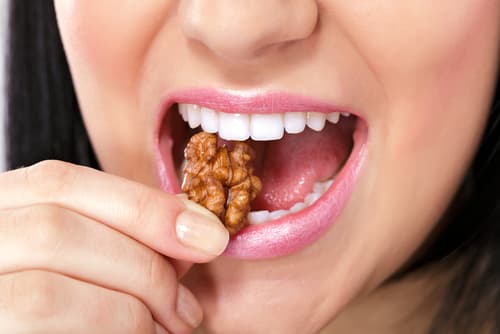Enamel, the substance that covers the outside of our teeth, is the hardest material in our bodies. Made of mostly of minerals, this translucent coating protects our teeth and gives them the strength to crush, chew and tear the many different foods we eat.
Our enamel has a tough job to do, under rough conditions. Acid is what causes tooth enamel to weaken, and unfortunately, many of the foods and drinks that we consume contain high levels of different types of acid, which can be found in fruits, coffee, alcohol, and many other products. Sugary foods and drinks also trigger bacteria in our mouth to produce acid, which does further damage.
Once this protective layer of enamel has been compromised, tooth decay can take place, causing painful cavities and potentially serious damage to the structure and nerves of our teeth. That’s why tooth enamel is important, and why we must do everything we can to take care of it, including brushing our teeth regularly and using fluoride products.
When we lose enamel, unfortunately, it doesn’t grow back. Enamel contains no living cells, so it doesn’t regenerate. Even in the most developed countries, rates of tooth decay are high — the World Health Organization estimates that 60 to 90 percent of children and nearly 100 percent of adults have had a cavity. This shows that we are not doing enough to protect our teeth from enamel erosion and damage.
Leave it to Beavers: Why Beavers have Strong Teeth
In an attempt to better understand the structure of this substance and learn how to strengthen tooth enamel, researchers at Northwestern University recently decided to conduct a study on a member of the animal kingdom known for its particularly powerful enamel: the beaver.
Beavers are best known for building dams, which they do using their super-strong teeth to saw through massive logs. They don’t brush their teeth or use fluoride, yet their teeth don’t succumb to decay the way ours do. Scientists were interested in studying beavers to see if there is anything we can learn from the way their teeth differ from ours.
Color is a quick giveaway that there is something different about beaver teeth: their sharp, extra-strong front incisors are stained a reddish brown color. While humans tend to associate brownish-colored teeth with decay and poor dental health, in the beaver this actually indicates the presence of iron.
The scientists used advanced nano-imaging technology to look at the essential atomic structure of the beavers’ teeth and found deposits of iron, as well as magnesium, which exists in human enamel too. This pigmented, iron-enhanced enamel was shown to be stronger than regular enamel treated with fluoride. Now that the researchers have identified this crucial difference, they can begin working on ways to use this information to improve treatments to human tooth enamel.
Current Methods for Strengthening Teeth
Until further investigation and study is complete, we are still dependent on current methods of tooth enamel repair. Dentists use several methods to address tooth restoration for enamel erosion. The most common one is tooth bonding, where tinted resin is applied to a damaged tooth. Crowns can also be applied to teeth with weakened enamel.

